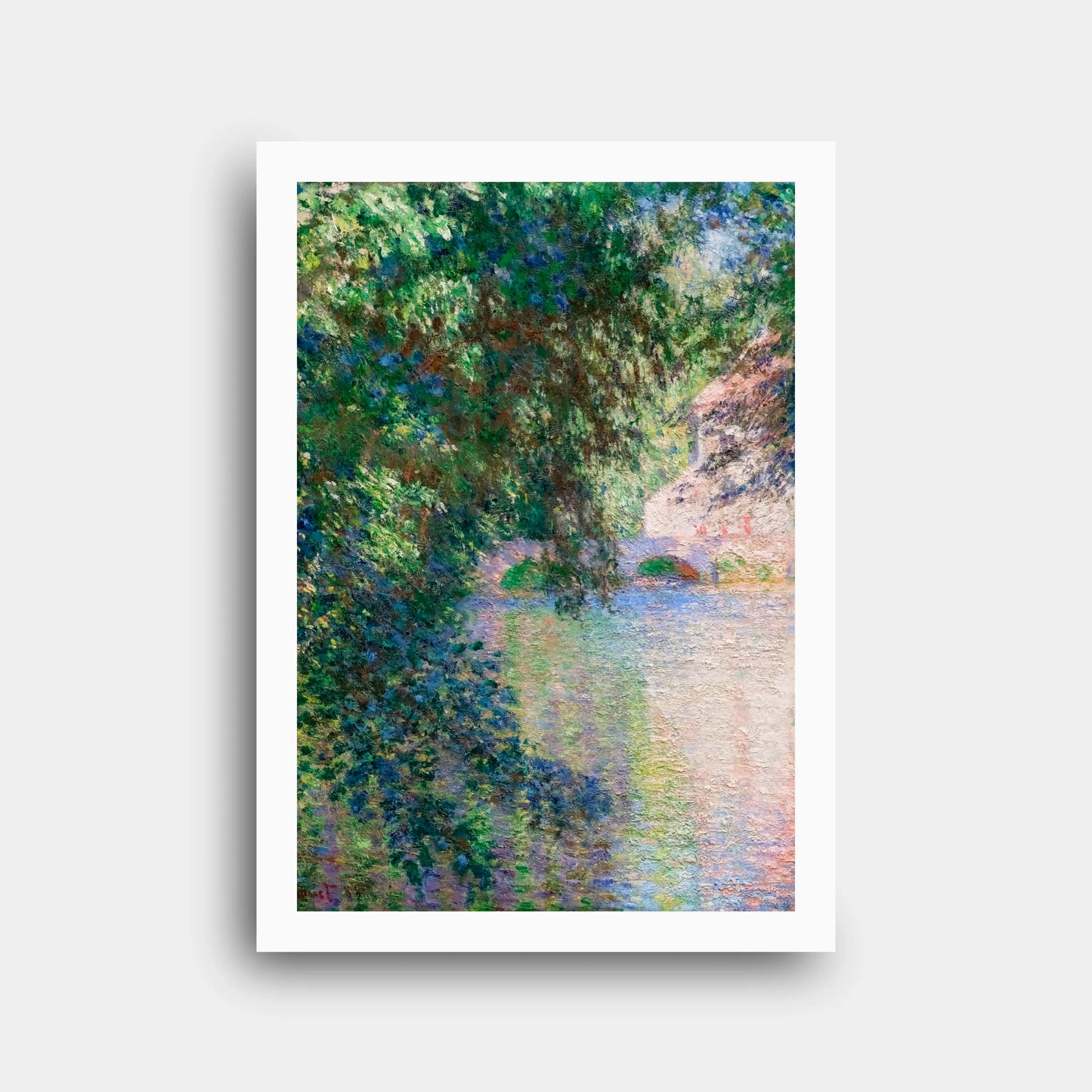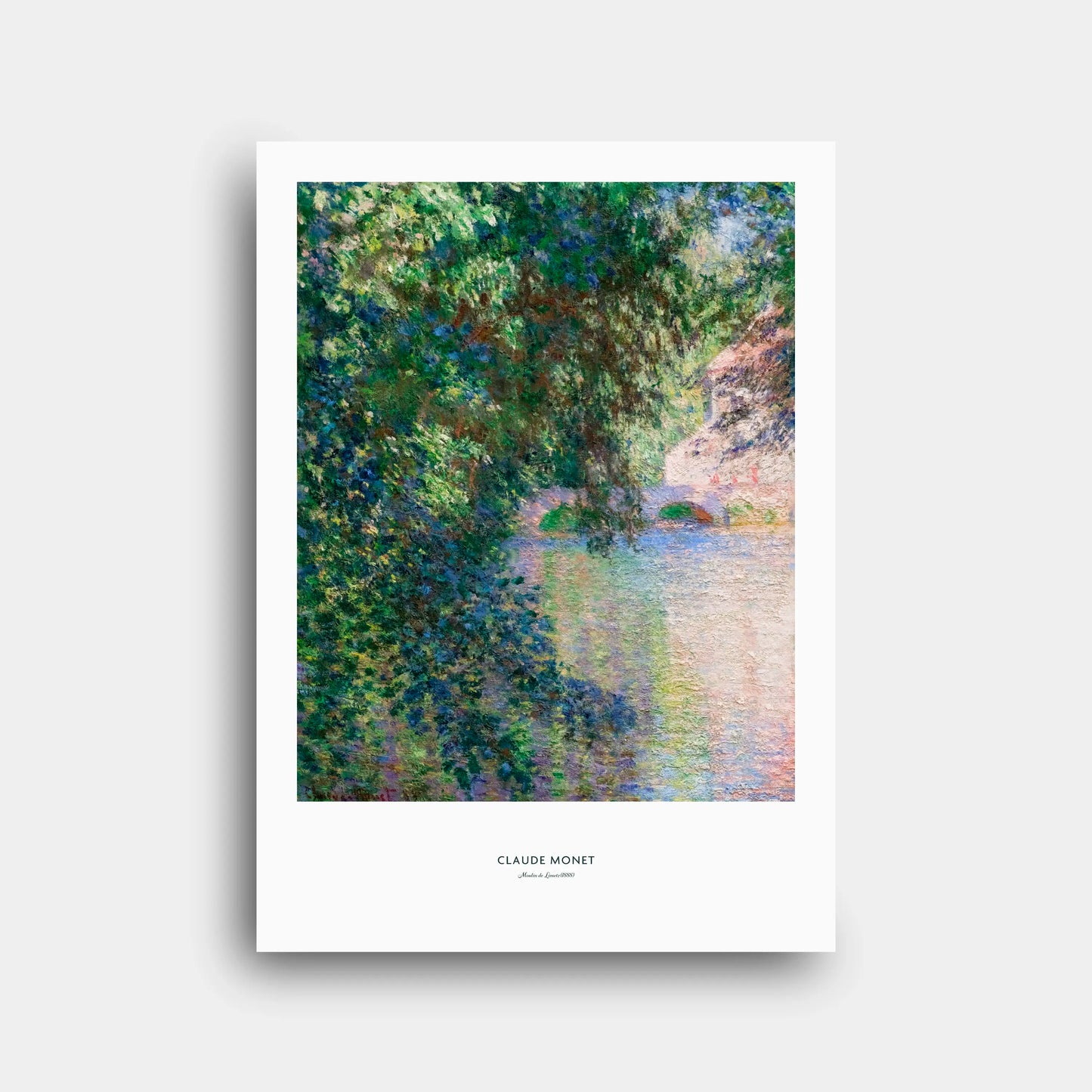Claude Monet - Moulin de Limetz (1888) - Canvas Print N167
Claude Monet - Moulin de Limetz (1888) - Canvas Print N167
Couldn't load pickup availability
Share
Paper Poster | Canvas Print | Digital File
1. Historical and Artistic Context
Claude Monet’s “Moulin de Limetz” (1888) was created during a period when the artist had fully matured his Impressionist style and had begun to focus more intensively on intimate landscapes and light studies near his home in Giverny. The work belongs to the late 1880s, a time when Monet was captivated by the surrounding countryside, painting bridges, rivers, mills, and gardens. Limetz, a small village near Giverny, housed an old mill that inspired Monet with its picturesque charm and the way water and foliage played together in light and color. This period also reflects Monet’s desire to move away from urban subjects, concentrating instead on rural serenity and the endless possibilities of natural atmospheres.
2. Technical and Stylistic Analysis
The canvas is dominated by a cascade of greens and blues, layered with flickering brushstrokes that create a sense of motion and vitality. The asymmetrical composition draws the viewer’s gaze from the dense foliage in the foreground to the sunlit bridge in the background, a masterful use of spatial contrast. Monet employs broken color and rapid strokes, hallmarks of Impressionism, to dissolve form into luminous impressions. The juxtaposition of darker greens with pastel reflections in the water enhances depth and dynamism. The brushwork avoids precision, instead aiming to capture fleeting perceptions of light filtering through leaves and shimmering on water.
3. Symbolism and Interpretation
Although Monet resisted symbolic interpretation, viewers often find metaphorical layers in his landscapes. The shaded foliage can represent the mysteries of nature, while the glowing bridge and light-filled water symbolize clarity, passage, and harmony. The painting evokes a dialogue between concealment and revelation: the dark, enclosing vegetation frames the openness of the river, suggesting both introspection and liberation. It is not only a landscape but also an emotional expression of quietude, the merging of man-made structures with the rhythms of nature, and a meditation on time’s passage as reflected in the moving waters.
4. Technique and Materials
Monet worked with oil on canvas, applying pigments with varied textures and thicknesses. The brushstrokes are layered to create a tactile surface where colors intermingle optically rather than physically. The artist’s palette for this piece includes rich viridians, ultramarines, cobalt blues, ochres, and touches of rose and violet. Light was his true medium: rather than simply depicting form, Monet manipulated the interaction of pigments so that the viewer perceives shimmering transitions. This technique required working quickly in natural light, often en plein air, and later refining the canvas in the studio without losing the freshness of the impression.
5. Cultural Impact
Monet’s depictions of rural France contributed to a cultural shift in how landscapes were perceived. Rather than backdrops for narrative scenes, landscapes became independent subjects that conveyed emotional resonance. “Moulin de Limetz” reflects a new cultural sensitivity toward environmental beauty and personal contemplation. For modern audiences, it embodies the Impressionist revolution that prioritized perception, sensation, and individuality in art. Moreover, Monet’s fascination with everyday landscapes elevated the ordinary into the poetic, influencing later movements such as Post-Impressionism and even Abstract Expressionism.
6. Critical Reception and Scholarly Interpretations
Critics of Monet’s time often described his works as unfinished sketches, yet by the late 1880s he had gained considerable recognition. Today, “Moulin de Limetz” is seen as a significant example of his ability to merge structure and spontaneity. Scholars emphasize the painting’s balance between abstraction and representation. The dense foliage, while seemingly chaotic, is orchestrated with precision to guide the viewer’s vision. Art historians also highlight how this work anticipates Monet’s later obsession with serial paintings, where he would repeatedly explore the same subject under shifting lights and seasons.
7. Museum, Provenance and Exhibition History
The painting has passed through several private collections before being exhibited in Impressionist retrospectives. Its provenance reflects the increasing value collectors placed on Monet’s rural themes in the late 19th and early 20th centuries. Today, works from this series are housed in major museums and private collections worldwide, often displayed alongside Monet’s water lily series to demonstrate his evolving exploration of light on water surfaces. Exhibitions have emphasized its role as a bridge between the artist’s earlier Impressionist views and his later near-abstract water studies at Giverny.
8. Interesting Facts
1. Monet painted “Moulin de Limetz” near his home in Giverny, just a short walk from his famous gardens.
2. The bridge seen in the distance was part of a functioning watermill, an important rural landmark of the time.
3. Monet often returned to Limetz to capture different times of day and weather conditions.
4. The heavy use of greens shows Monet’s mastery of tonal variations within a single color family.
5. The work reflects Monet’s interest in framing perspectives, as foliage acts like a natural curtain.
6. It is considered part of his prelude to the grand water lily cycle.
7. Early critics thought the painting was too blurred to be considered finished.
8. The subtle use of pink and violet suggests the play of light rather than literal reflections.
9. Monet’s quick strokes were designed to echo the rustling of leaves in the wind.
10. Collectors in the early 20th century often favored these transitional works as they hinted at the more radical abstraction of his late career.
9. Conclusion
“Moulin de Limetz” (1888) captures Claude Monet’s genius in transforming a simple riverside scene into a shimmering meditation on light, space, and emotion. By balancing dense, shadowed foliage with radiant reflections and distant architecture, Monet created a dynamic composition that embodies the essence of Impressionism. The painting resonates as both a visual pleasure and a cultural landmark, reminding viewers of the profound beauty in nature’s fleeting moments. Its enduring appeal lies in its ability to merge technical mastery with poetic vision, ensuring Monet’s legacy as the painter of light and atmosphere.











